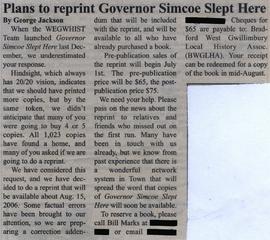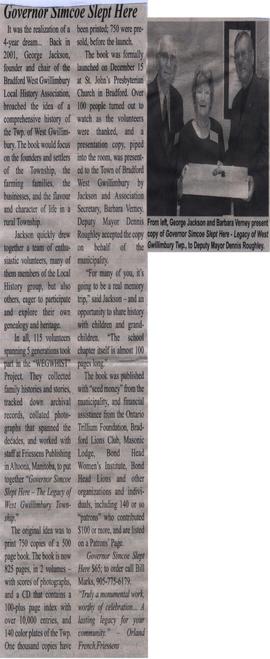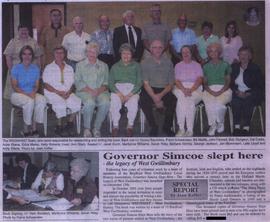Plans to reprint Governor Simcoe Slept Here
- CA BWGPL WEG-SBo-PH26711
- Pièce
- 2006-06-24
Fait partie de WEGWHIST Collection
When the WEGWHIST Team launched Governor Simcoe Slept Here last December, we underestimated your response. Hindsight, which always has 20/20 vision, indicates that we should have printed more copies, but by the same token, we didn't anticipate that many of you were going to buy 4 or 5 copies. All 1,023 copies have found a home, and many of you asked if we are going to do a reprint. We have considered this request, and we have decided to do a reprint that will be available about Aug. 15, 2006. Some factual errors have been brought to our attention, so we are preparing a correction addendum that will be included with the reprint, and will be available to all who have already purchased a book. Pre-publication sales of the reprint will begin July 1st. The pre-publication price will be $65, the post-publication price $75.
Sans titre









